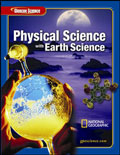1 A) argon B) nitrogen C) ozone D) carbon dioxide 2 A) lithosphere B) asthenosphere C) troposhere D) stratosphere 3 A) adversion B) inversion C) climax D) stucture 4 A) Greenhouse effect B) Latent heat C) Urban heat island D) Coriolis effect 5 A) Smog forms when temperatures decrease rapidly and water vapor condenses. B) Smog forms when pollutants trigger condensation in air that is not fully saturated with water vapor. C) Smog forms when there are few condensation nuclei present. D) Smog forms when cirrus clouds release droplets. 6 A) Wind blows from low pressure to high pressure. B) Wind direction is influenced by the equal heating between the equator and the poles. C) Wind blows faster as Earth rotates faster. D) Wind blows from high pressure to low pressure. 7 A) southeast trades B) polar easterlies C) northeast trades D) westerlies 8 A) hail B) squall C) thunderstorm D) tornado 9 A) sea breezes B) subtropical highs C) westerlies D) jet streams 10 A) greenhouse effect B) albedo C) Coriolis effect D) urban heat island 11 A) isohyets B) isopycnal C) isobars D) isotherms 12 A) El Niño B) continental climate C) La Niña D) maritime climate 13 A) Lee rain shadow B) Continental climate C) Lake effect D) Maritime climate 14 A) maritime climate B) continental climate C) warm climate D) microclimate 15 A) water vapor found in the stratosphere B) frozen water in snow, ice, and glaciers C) liquid water in oceans, lakes, rivers, soil, and underground D) the solid Earth, including its soil, rocks, and mantle 16 A) orbital cycles B) increase in ozone C) decrease in water vapor content D) deforestation 17 A) Atlantic Ocean B) Gulf of Mexico C) Equatorial Pacific Ocean D) Mexico 18 A) carbon dioxide B) CFC (chlorofluorocarbons) C) water vapor D) pollution 19 A) deforestation B) overgrazing of livestock C) crop irrigation D) recycling 20 A) carbon dioxide B) nitrogen C) water vapor D) argon





